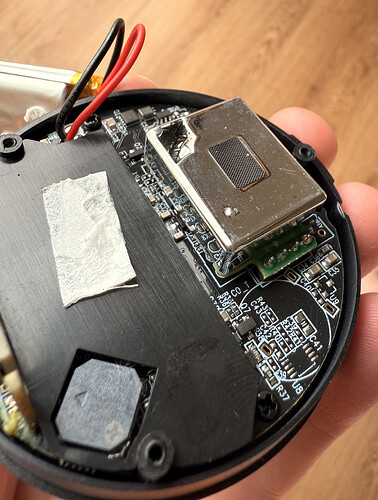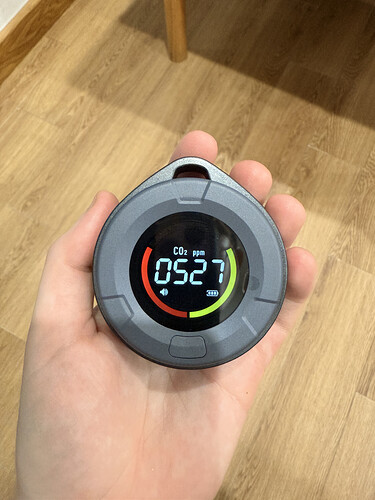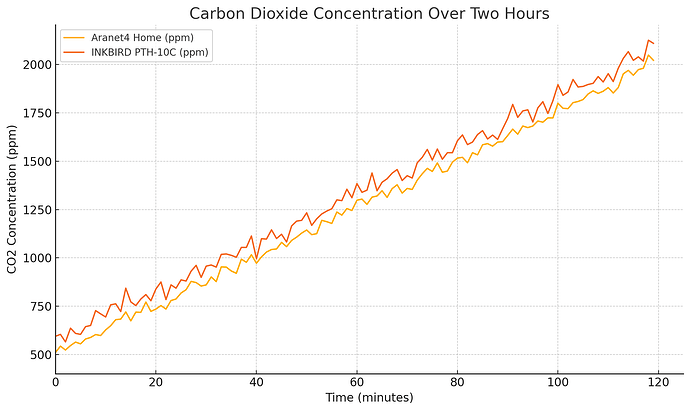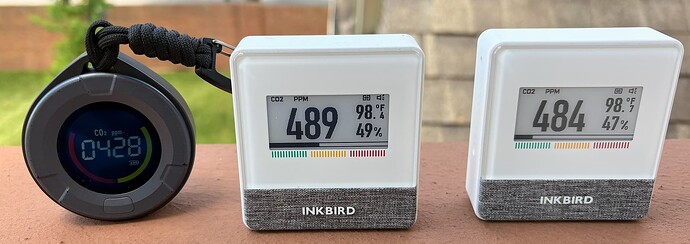For the past few years, I’ve recommended the Vitalight Mini CO2 Detector as the most affordable carbon dioxide monitor. While there are some cheaper options out there, this was the lowest cost device that I could recommend due to the fact that - despite having many flaws - it still uses a genuine NDIR sensor that has proven to be quite accurate. However, it is far from perfect and I’ve heard from quite a few users that durability is not great. While my monitor still works, I’ve been looking for some other low cost devices that are accurate enough that I can recommend them.
Recently, I began to hear a lot about the INKBIRD PTH-10C, a very low-cost CO2 sensor that I thought deserved a deeper look. I’ve had the device for a couple of weeks now and I’ve had some time to do some initial testing with the device. While I will have more thoughts to share in an upcoming full review, I thought I would share them here as many people appear to be interested in this device. Let’s dive in!
For reference, here is my review of the Vitalight, which explains some of my issues with the device as well as the positives.
Vitalight Mini CO2 Detector Review:
The first appeal of both of these devices is the price. Both are very low cost, and they offer comparable prices depending on where you buy them.
Vitalight Mini CO2 Detector - usually around $37, but can be found as low as $25.
INKBIRD PTH-10C - $39 (but I got mine for around $32 in Vietnam).
Both of these devices are in the lowest cost category that I would consider when it comes to CO2 monitors. Any lower than this, and you’re likely looking at devices that use inaccurate sensors (not NDIR) and incorrectly report carbon dioxide concentrations. For this reason, I’m always very hesitant to recommend any ultra low cost monitors unless I’ve first had a chance to test them myself.
Does the INKBIRD PTH-10C Use NDIR?
Yes! This is the first thing I look for in any low-cost CO2 monitor, and I’m glad to say that the PTH-10C does indeed use an NDIR sensor. While I’ve been unable to find the brand or model number of this sensor, having an NDIR sensor at least means the device has the potential to be accurate. If, for example, the device has a metal oxide semiconductor (MOS) sensor, I would instantly discount it as not being able to provide accurate readings.
So, is the sensor accurate? Well, I haven’t yet had a chance to thoroughly test this, but it does appear to track quite closely with my other devices such as the Aranet4 Home and AirValent CO2 monitor. While I want to spend more time with the device before coming to a conclusion here, my first impressions are positive in regards to accuracy.
INKBIRD PTH-10C vs Vitalight Mini CO2 Detector
Similarly to the Vitalight, the INKBIRD is a ‘dumb’ CO2 monitor that does not offer any form of connectivity, data exporting, or other advanced features. In this price range, this is expected, but it is important to keep in mind.
Typically, the PTH-10C is a bit pricier, so is the extra cost worth it? I think it may well be for the following reasons:
- The PTH-10C feels better built and I would guess it is more durable. I can’t guarantee this as I’ve only had mine for a few weeks, but I believe it is more durable than the Mini CO2 Detector.
- It has significantly better battery life.
- Has adjustable alarm thresholds.
- Allows for manual toggling of ABC (automatic baseline calibration).
- Has a better screen that is more easily visible in bright areas.
So far, I’ve had quite positive experiences with this device and I think it could be a good choice - as long as you’re aware of its limitations. I will continue to share my thoughts here as I work on my full review.
As always, please feel free to ask if you have any questions!



